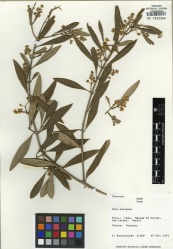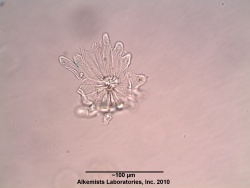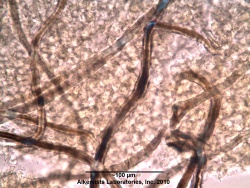Olea europaea (leaf)
From AHPA Botanical Identity References Compendium
(Difference between revisions)
(add askbox) |
(add USD 1918 information (organoleptic and macroscopic)) |
||
| Line 25: | Line 25: | ||
=Organoleptic Characteristics= | =Organoleptic Characteristics= | ||
| + | {| border=1 | ||
| + | | | ||
| + | {{Organolepsy | source=United States Dispensatory (1918) | ||
| + | | description=The leaves and bark of the olive tree have an acrid and bitterish taste ...}} | ||
| + | |} | ||
=Macroscopic Characteristics= | =Macroscopic Characteristics= | ||
| + | {| border=1 | ||
| + | | | ||
| + | {{Macroscopy | source=United States Dispensatory (1918) | ||
| + | | description=''Olea europaea'' L. is one of the leading fruit trees of the world. It is usually from fifteen to twenty-five feet in height, though sometimes much larger ... It has a solid, erect, unequal stem, with numerous straight branches, covered with a grayish bark. The leaves, which stand opposite to each other on short footstalks, are evergreen, firm, lanceolate, entire, two or three inches in length, with the edges somewhat reverted, smooth and of a dark green color on their upper surface, whitish and almost silvery beneath. The flowers are small, yellowish-white, and disposed in opposite axillary clusters, about half as long as the leaves, and accompanied with small, obtuse, hoary bracts. The fruit, or olive, is a smooth, oblong or oval drupe, greenish at first, but of a deep violet color when ripe, with a fleshy pericarp, and a very hard nut of a similar shape. Clusters of not less than thirty flowers yield only two or three ripe olives.}} | ||
| + | |} | ||
| + | |||
=Microscopic Characteristics= | =Microscopic Characteristics= | ||
{{Media2 |cat=Microscopy | source=Elan M. Sudberg, Alkemist Laboratories | {{Media2 |cat=Microscopy | source=Elan M. Sudberg, Alkemist Laboratories | ||
Latest revision as of 19:24, 31 March 2015
Contents |
Nomenclature
Olea europaea L. Oleaceae
Standardized common name (English): olive
Botanical Voucher Specimen
|
|
Organoleptic Characteristics
|
Macroscopic Characteristics
|
Microscopic Characteristics
 |
 |
|
|
|
High Performance Thin Layer Chromatographic Identification
Supplementary Information
Sources
- ↑ MOBOT, Tropicos.org http://www.tropicos.org/Image/100000992
- ↑ United States Dispensatory (1918)
- ↑ United States Dispensatory (1918)
- ↑ Elan M. Sudberg, Alkemist Laboratories http://www.alkemist.com
- ↑ Elan M. Sudberg, Alkemist Laboratories http://www.alkemist.com


